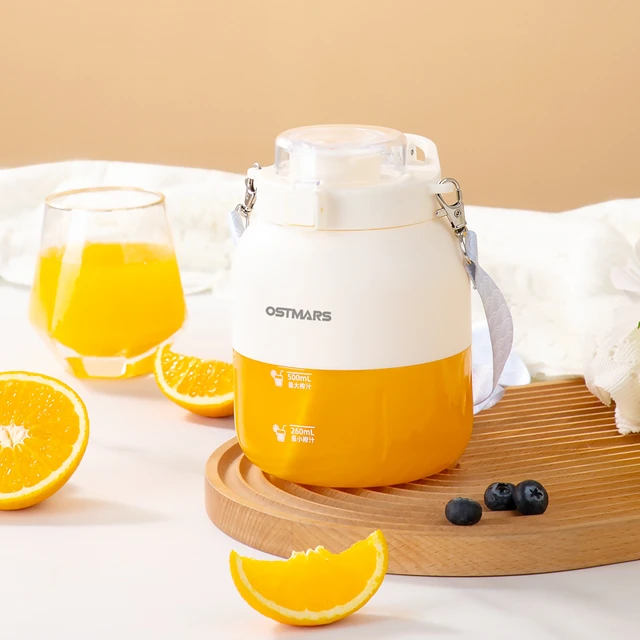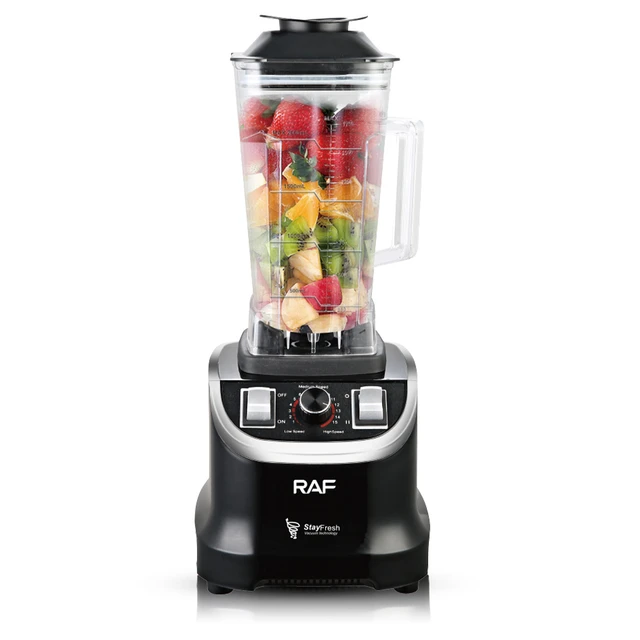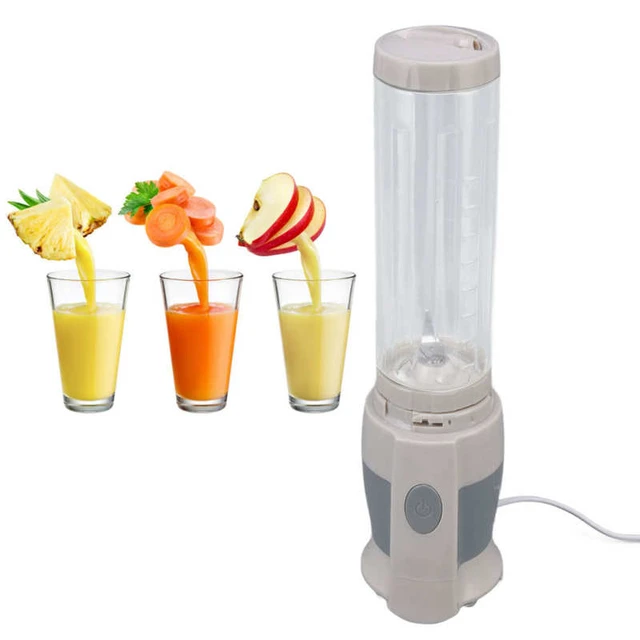
Introduction
Blending and juicing are two popular methods of incorporating fruits and vegetables into our diets, providing a convenient way to consume essential nutrients. While both methods offer benefits, they differ in terms of extraction process, fiber content, nutrient retention, and overall health impact. In this guide, we will compare blending and juicing, exploring their respective advantages and drawbacks, to help you make an informed choice on which method best suits your dietary preferences and health goals.

Is blending better than juicing?
Extracting Nutrients: Blending
1.1. The Blending Process
Blending involves pulverizing whole fruits and vegetables, including their fiber-rich peels, seeds, and pulp, into a smooth consistency while retaining all the edible components. Blenders break down the ingredients into a finely blended mixture without separating the liquid from the fiber.
1.2. Retention of Fiber
One of the main benefits of blending is the retention of dietary fiber. Fiber plays a crucial role in digestion, promoting satiety, regulating blood sugar levels, and maintaining healthy bowel movements. Blending ensures that the fiber content of the ingredients remains intact, providing essential nutrients and promoting digestive health.
1.3. Slow Release of Nutrients
The fiber in blended concoctions slows down the release of nutrients into the bloodstream, preventing rapid spikes in blood sugar levels. This slow release helps maintain energy levels and avoids sudden crashes, making blended beverages suitable for sustained energy throughout the day.

Extracting Nutrients: Juicing
2.1. The Juicing Process
Juicing involves extracting the liquid content from fruits and vegetables, leaving behind the fibrous pulp. This is typically done using a juicer or a cold-press method, which separates the juice from the solid components.
2.2. Concentrated Nutrients
Juicing extracts concentrated amounts of vitamins, minerals, and antioxidants from fruits and vegetables into a liquid form. Without the fiber, the body can quickly absorb and utilize these nutrients, providing a boost of essential vitamins and minerals.
2.3. Reduced Fiber Content
The main drawback of juicing is the reduction or removal of dietary fiber. While fiber is essential for digestion, its absence in juices allows for easier digestion and quicker absorption of nutrients. However, this can lead to a faster release of sugars into the bloodstream, potentially impacting blood sugar levels for some individuals.
Satiety and Digestive Health: Blending
3.1. Enhanced Satiety
Due to the presence of fiber, blended beverages tend to be more filling and can help control appetite. The fiber content promotes a feeling of fullness, reducing the likelihood of overeating and aiding in weight management.
3.2. Improved Digestion
Fiber plays a crucial role in maintaining a healthy digestive system. The fiber-rich content of blended beverages promotes regular bowel movements, prevents constipation, and supports overall gut health.

Satiety and Digestive Health: Juicing
4.1. Hydration and Nutrient Absorption
Juices are hydrating and can provide a quick source of essential nutrients. The absence of fiber allows the body to rapidly absorb these nutrients, making them readily available for use.
4.2. Potential Digestive Challenges
The reduced fiber content in juices may lead to a less satisfying feeling of fullness compared to blended beverages. Additionally, some individuals may experience digestive challenges, such as bloating or discomfort, due to the concentrated sugar content or quicker absorption of nutrients.
Weight Management: Blending
5.1. Fiber for Weight Management
The fiber content in blended beverages can aid in weight management. It promotes satiety, reduces feelings of hunger, and helps control portion sizes, making it easier to maintain a balanced diet and manage caloric intake.
5.2. Lower Caloric Density
Blended beverages tend to have a lower caloric density compared to juices. The inclusion of fiber-rich ingredients and the absence of added sugars or syrups in homemade blends contribute to a healthier option for weight-conscious individuals.

Weight Management: Juicing
6.1. Caloric Intake Awareness
While juicing can provide a concentrated source of nutrients, it is important to be aware of the overall caloric intake, especially if weight management is a goal. Juices can be calorie-dense, particularly when sweetened or when larger quantities are consumed.
6.2. Portion Control
Maintaining portion control while juicing is essential. Consuming excessive amounts of juice can lead to an increased caloric intake without the feeling of fullness, potentially hindering weight management efforts.
Antioxidant Content: Blending
7.1. Fiber and Antioxidants
Blending retains the fiber-rich components of fruits and vegetables, which also contain a significant amount of antioxidants. Antioxidants play a crucial role in neutralizing harmful free radicals in the body, protecting against cellular damage, and reducing the risk of chronic diseases.
7.2. Enhanced Nutrient Synergy
Blending allows for a combination of different fruits and vegetables, maximizing the intake of a wide range of antioxidants. This promotes nutrient synergy, where the presence of one nutrient enhances the absorption or effectiveness of another, leading to greater overall health benefits.
Antioxidant Content: Juicing
8.1. Concentrated Antioxidants
Juices can provide a concentrated source of antioxidants, as the extraction process separates the liquid containing these compounds from the fiber. This allows for a more potent intake of antioxidants, potentially providing a boost to the body’s defense against oxidative stress.
8.2. Variety of Antioxidant-Rich Ingredients
By using a variety of antioxidant-rich fruits and vegetables in juicing, individuals can benefit from a diverse range of antioxidants. Including ingredients such as berries, dark leafy greens, and citrus fruits can provide a wide array of these beneficial compounds.
Practicality and Convenience: Blending
9.1. Quick and Easy Preparation
Blending is relatively quick and easy, requiring minimal preparation time. Simply add the desired ingredients to the blender, blend until smooth, and enjoy. The inclusion of fiber-rich ingredients also reduces the need for additional components.
9.2. Cleaning and Maintenance
Blenders are generally easier to clean compared to juicers. With blended beverages, a simple rinse and wash of the blender pitcher, blades, and lid are usually sufficient. This makes blending a more convenient option for those with busy lifestyles or limited time for kitchen cleanup.
Practicality and Convenience: Juicing
10.1. Convenient On-the-Go Option
Juices can be prepared in advance and stored in portable containers, making them a convenient option for individuals on the go. They can be enjoyed as a refreshing and hydrating beverage throughout the day, providing a quick source of nutrients.
10.2. Reduced Preparation and Cleanup
While juicing requires the extraction process, it often involves less preparation time compared to blending. The absence of fibrous components also makes cleaning juicer components relatively quick and straightforward.

Conclusion
Both blending and juicing offer benefits and drawbacks, depending on individual dietary preferences and health goals. Blending retains the fiber content and provides a more filling, satiating option that supports digestive health and weight management. Juicing, on the other hand, allows for quick absorption of concentrated nutrients and hydration but may lack the fiber and potential satiety benefits of blended beverages. Ultimately, the choice between blending and juicing depends on personal preferences, health considerations, and individual goals. Incorporating a variety of fruits and vegetables into your diet in whichever form you prefer can help ensure a well-rounded nutrient intake and support a healthy lifestyle.